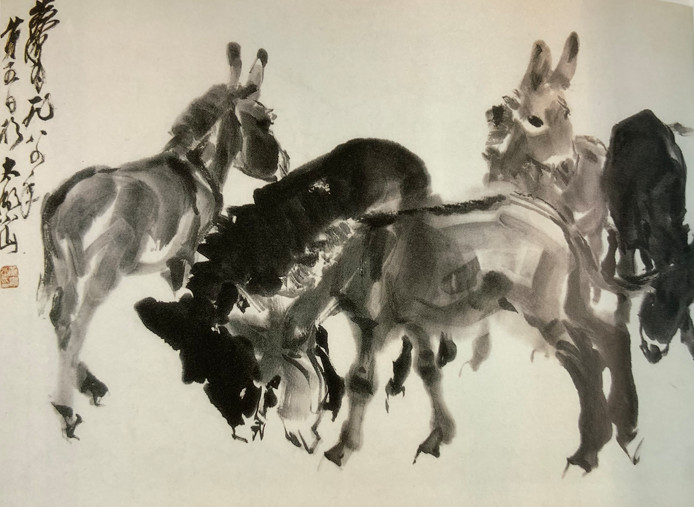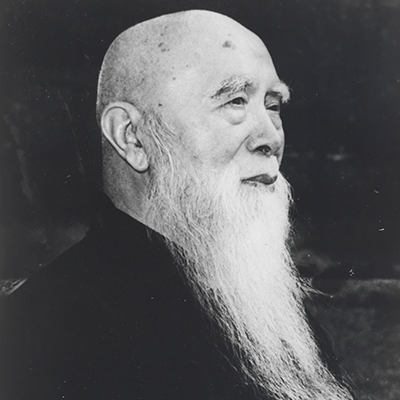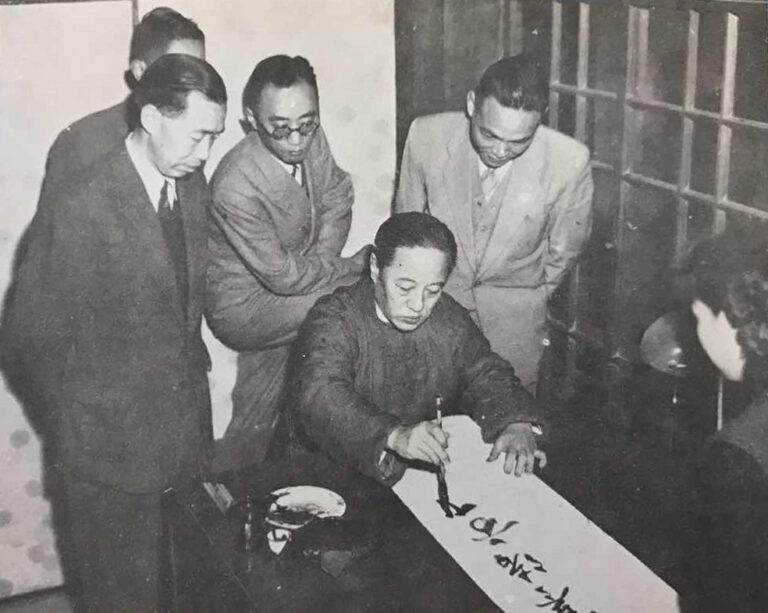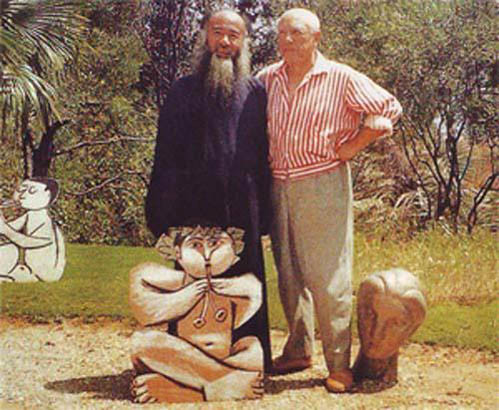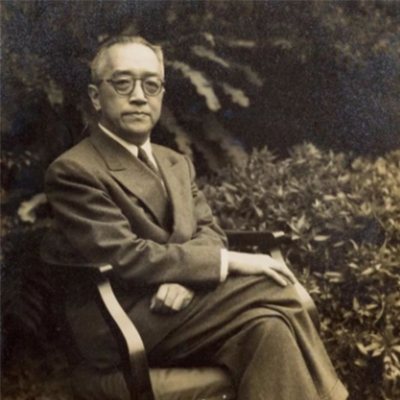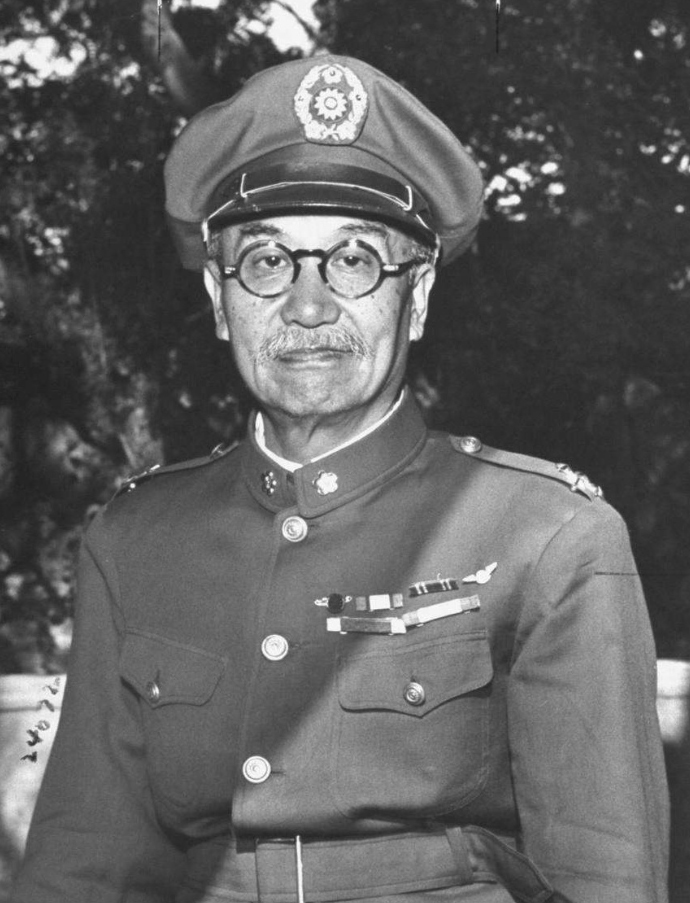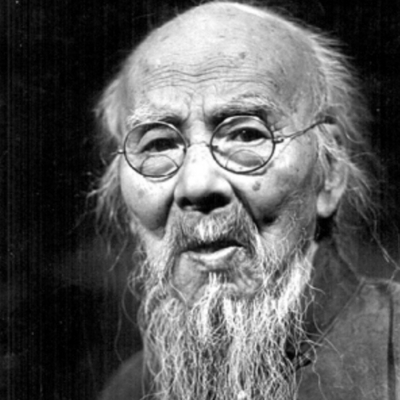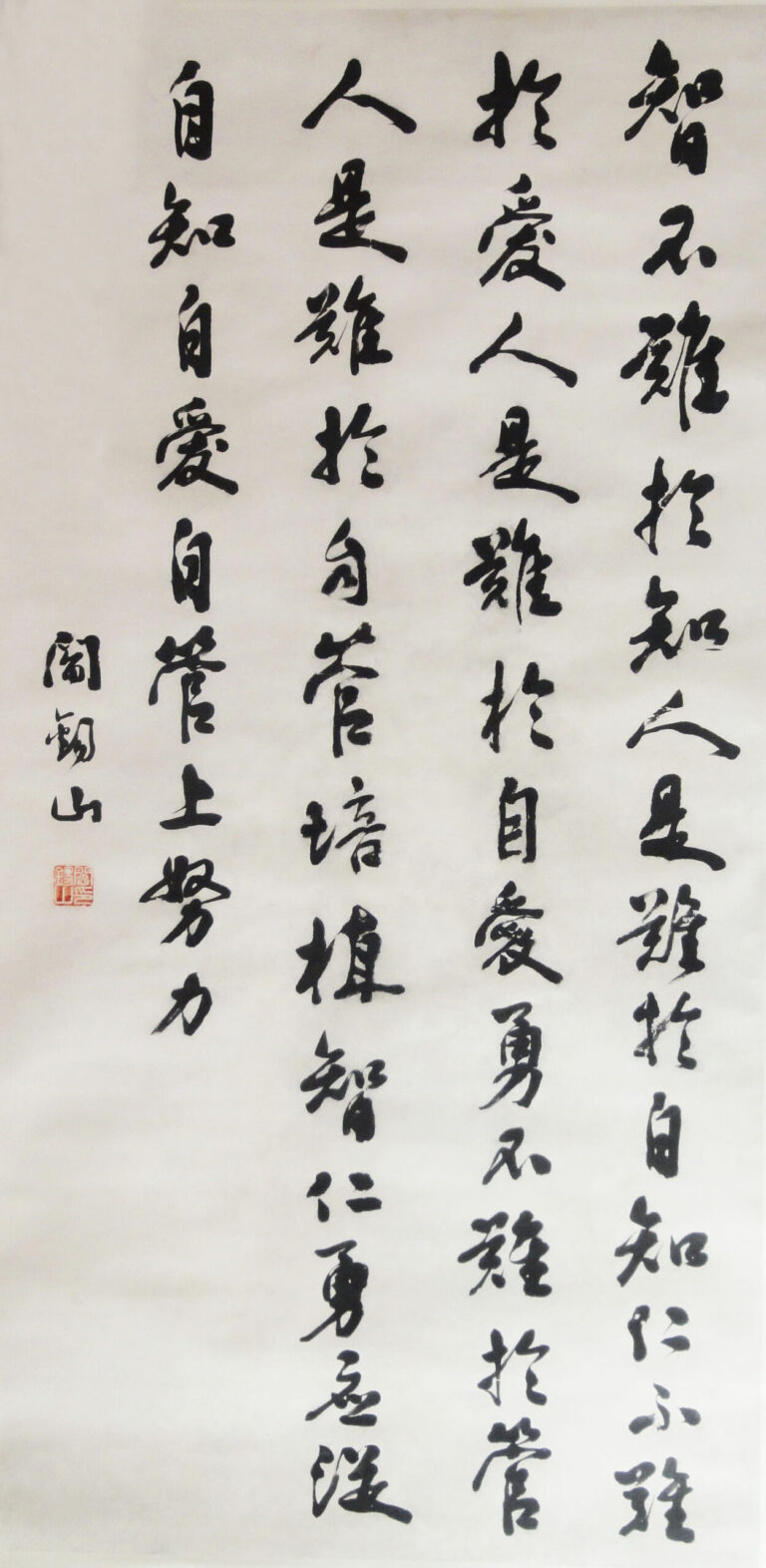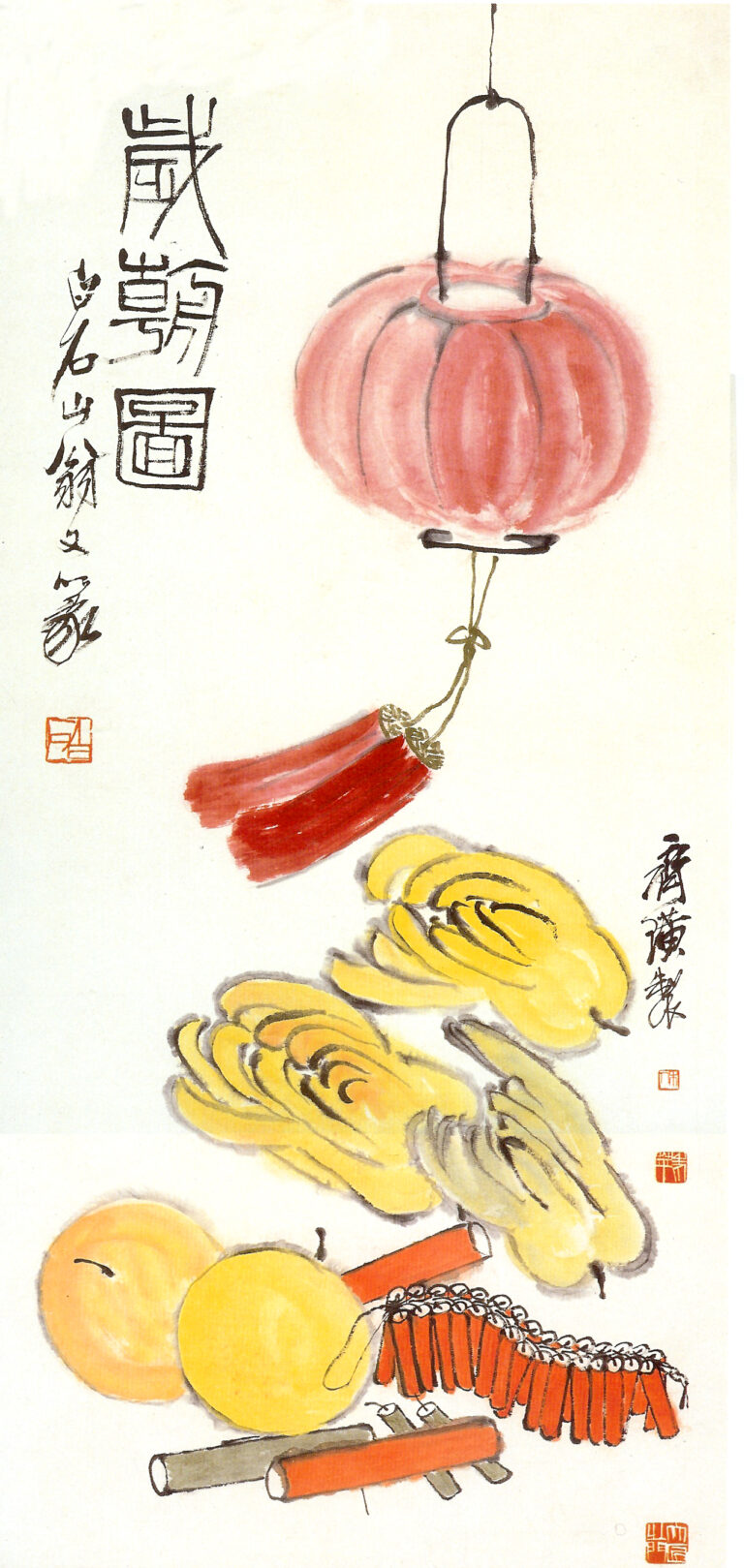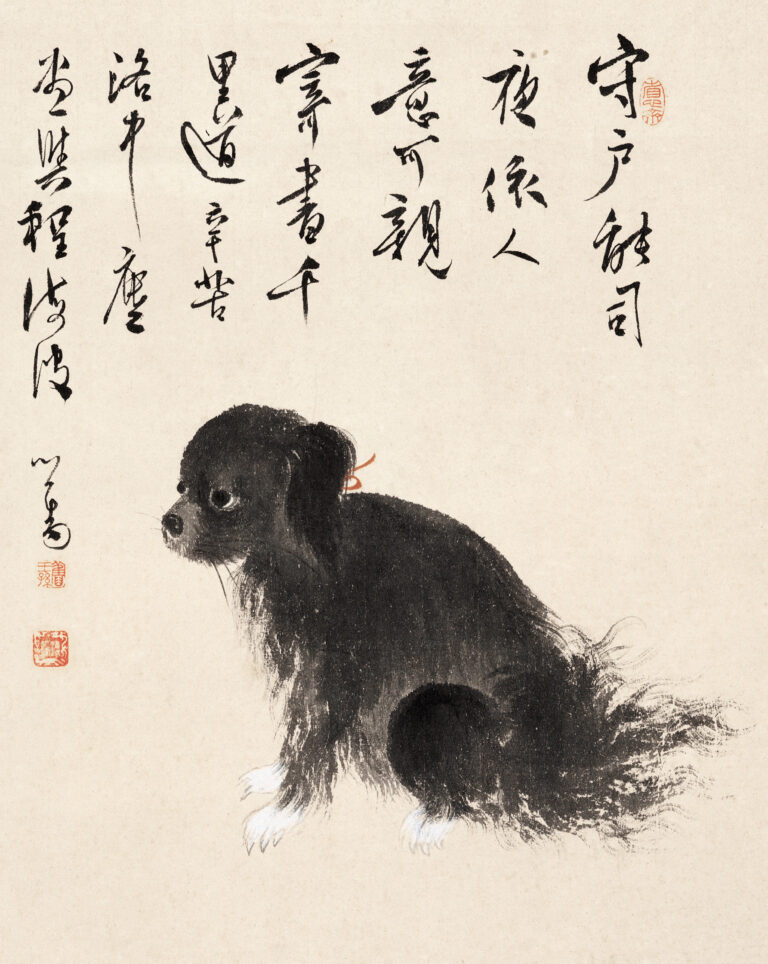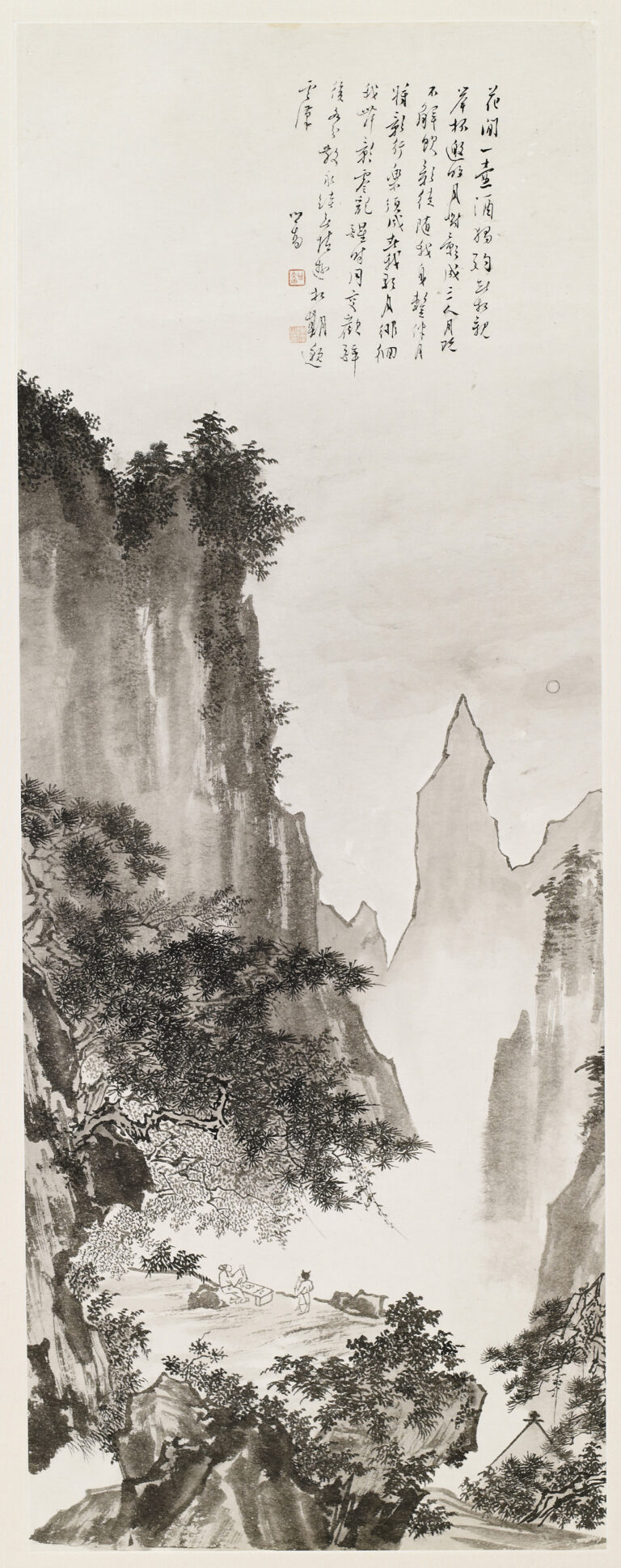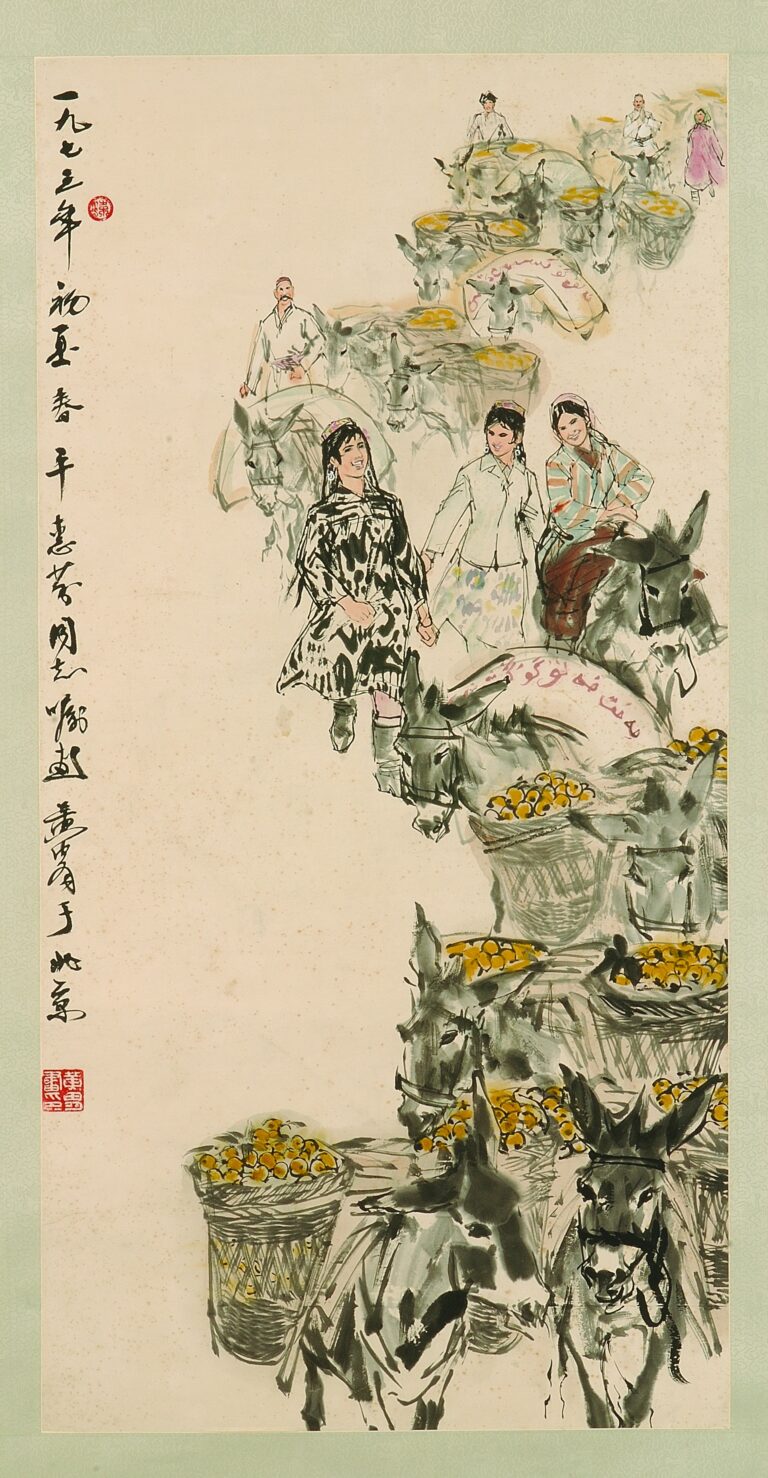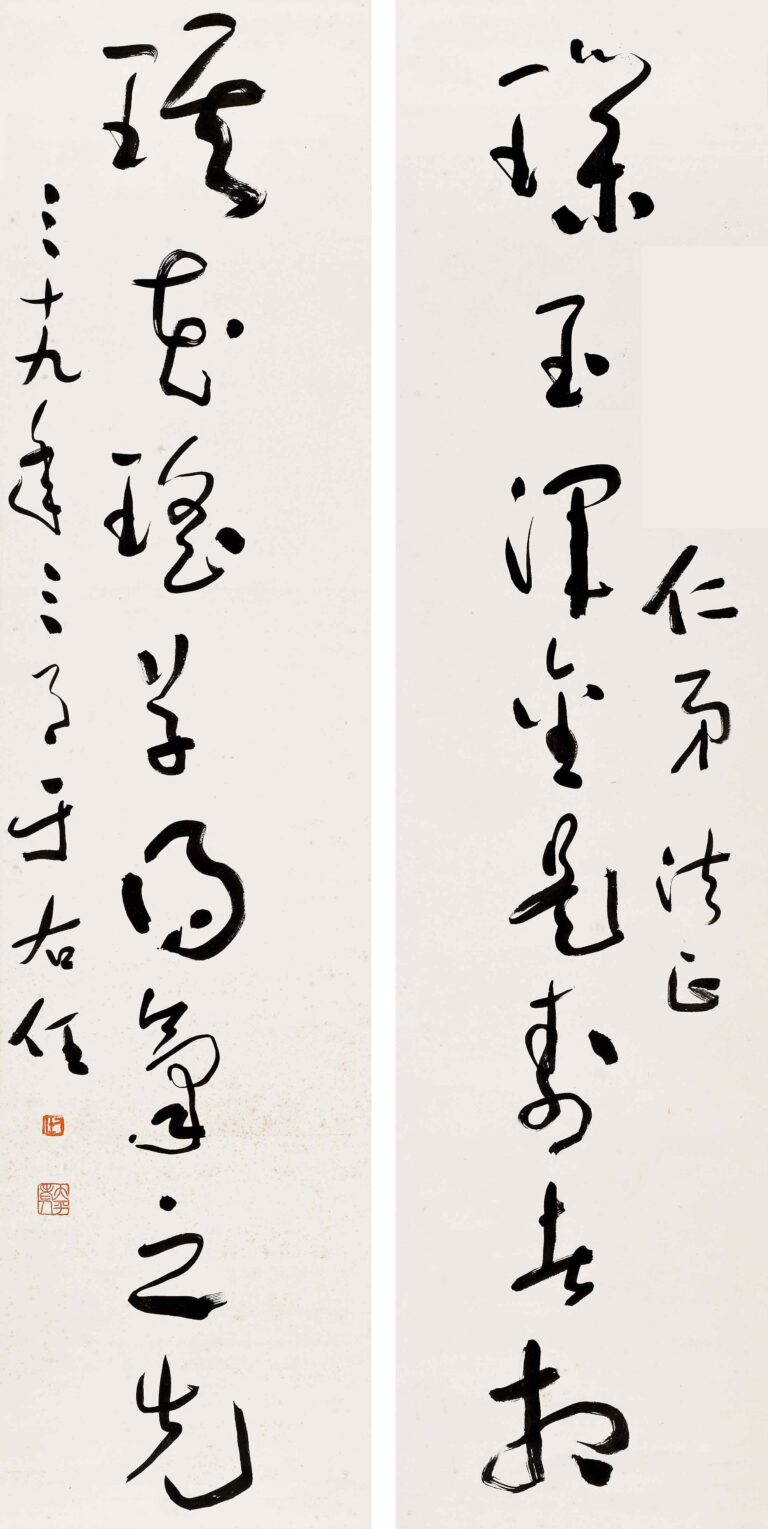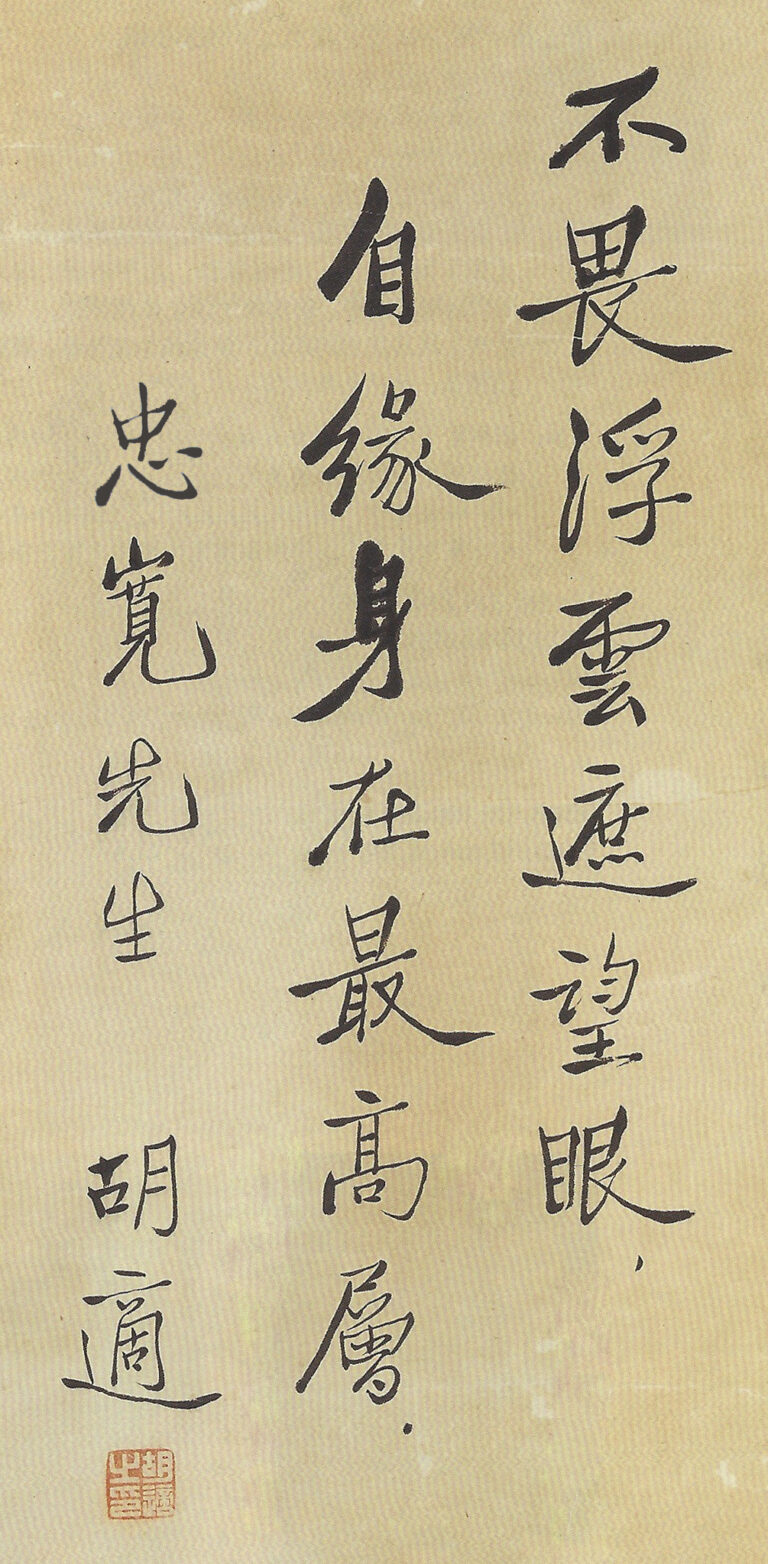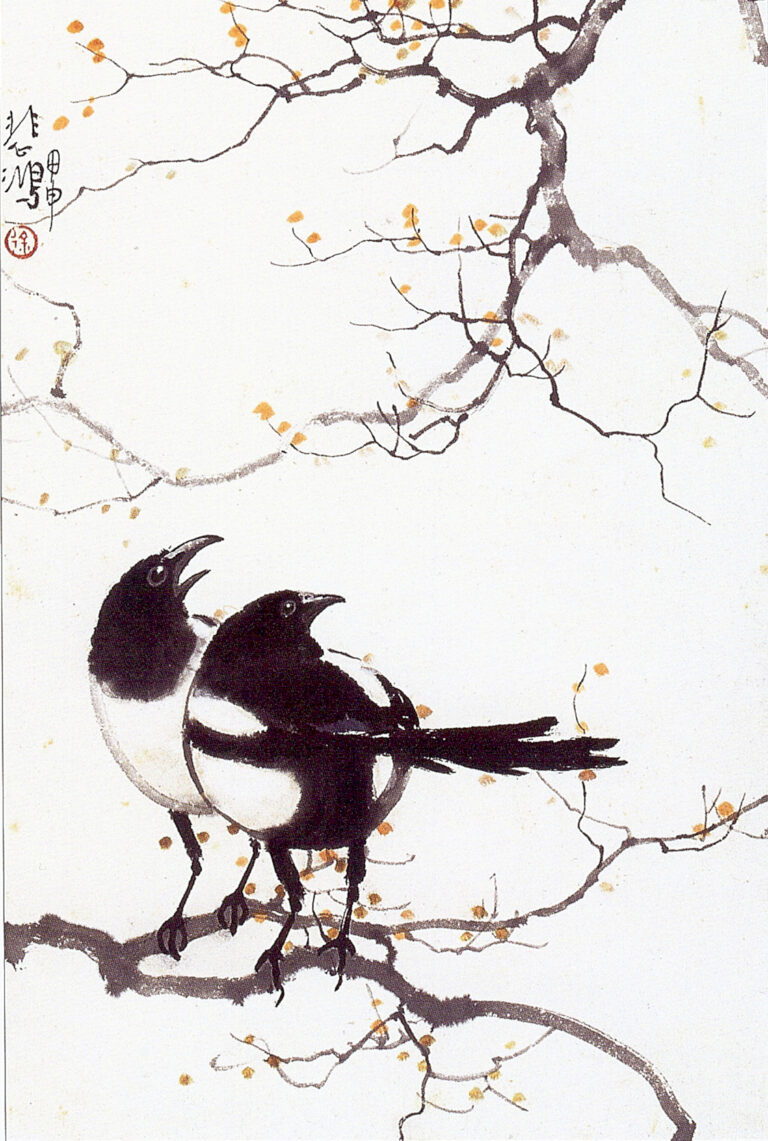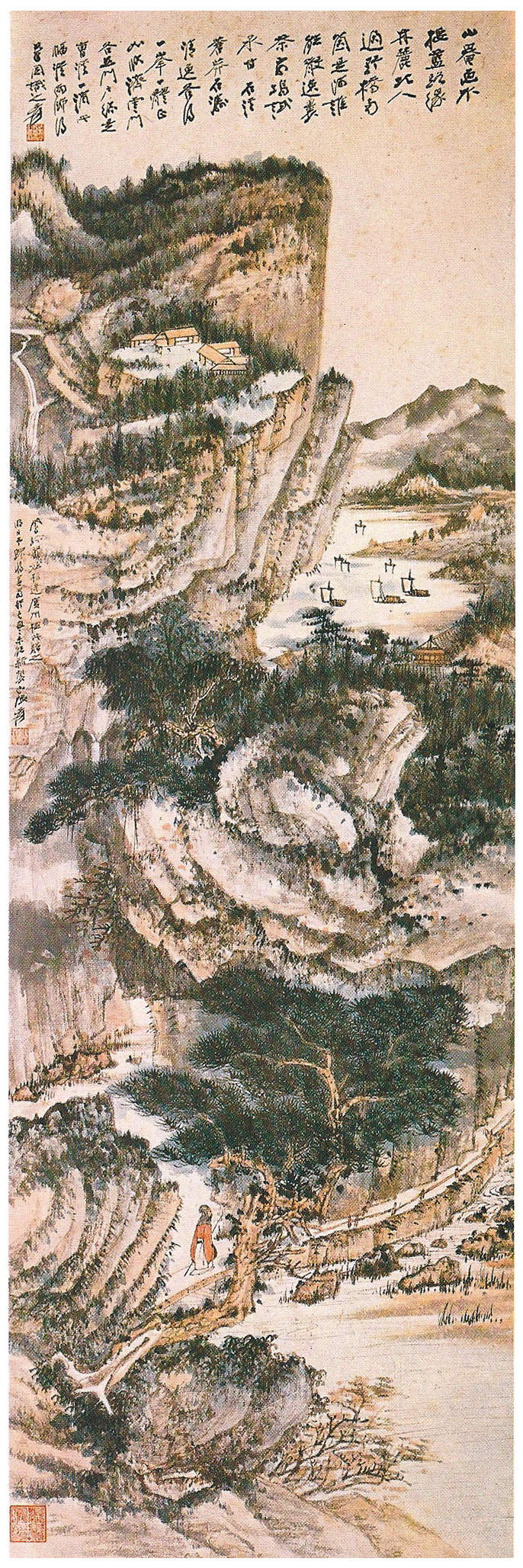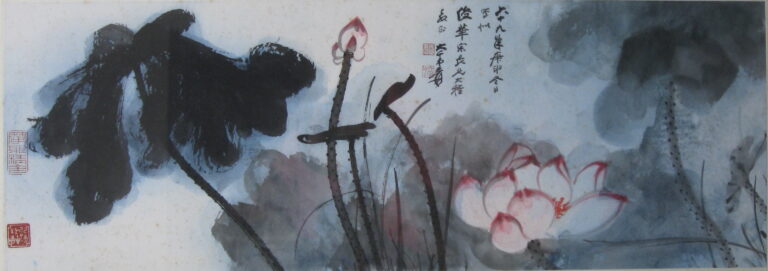The road of enlightenment and sketching at an early age
Huang Zhou's family has been poor since childhood, but he has a strong interest in art. At the age of 17, he carried painting tools for Han Leran, a painter who stayed in France, and trekked 800 miles to Qinchuan to practice his deep sketching skills. This experience of life made Huang Zhou understand that the true meaning of art must be rooted in real life, not empty pen and ink imitation.
Since the age of 18, Huang Zhou has studied with the famous Chinese painter Zhao Wangyun and officially entered the field of character painting. However, he has always firmly believed that artistic creation should start from "drafting drafts in life, practicing time in life, and finding skills in life", not simply copying ancient paintings. This practical attitude made him later stand out in the painting world and created his own unique pen and ink language.
Get rid of copying and go deep into life
Huang Zhou once said: "I didn't have a tomb when I started studying painting, which also has its benefits. I started making trouble in my life, sketching, observing, drawing, and learning, and then I learned traditional things. "It is this way of starting from writing and sketching quickly that his characters are no longer stylized classical reproductions, but living epitomes of the times.
In Huang Zhou's paintings, whether it is a camel carrying objects, a leaping horse, or the soft shadow of a girl from a minority group, you can see the reconstruction and fusion of traditional techniques such as Jinjian's "axe wrinkle", slender "silk drawing", and fresh "orchid leaf drawing".. He said: "No matter what kind of description method is used, it is based on being able to express the image better; it can be used for reference, but it cannot be conformist. "This is the core of his artistic practice: innovation is not lost in inheritance, and personality is not forgotten in reference.
Experimental field of Art in life
Huang Zhou's painting of a donkey is known as a "once-in-a-century masterpiece." He once confessed: "When I painted a donkey, I wanted to study and inherit the ink technique of my predecessors, and I wanted to build a test field. "In the seemingly simple curve of the donkey's back, Huang Zhou practiced pen, sharpened ink, and got a glimpse of the ever-changing pen and ink. This kind of concentration and perseverance has enabled his animals to surpass their appearance and show a simple, cute, smart and straightforward mental outlook.
In his "Picture of Raising a Child", the hen leaned over lovingly to feed the chicks. Between the thick ink and the fading dye, the layers of feathers and the beating expressions of the chicks are not only a reproduction of life, but also the crystallization of pen and ink cultivation. Huang Zhou said: "It is good to be able to have both form and spirit with pen and ink. "This is not only the pursuit of technique, but also the persistent exploration of the essence of art.
Huang Zhou (1925-1997) is best known for his artistic creation, which is characterized by heroic pen and ink, and Chinese character painting with a strong atmosphere of life. His masterpieces mainly focus on expressing the lives of ethnic minorities and animal paintings on the border of China. The following are some recognized masterpieces and their brief introductions.:
- "Prairie Play by Play"
This is one of Huang Zhou's most representative works, depicting a magnificent scene of ethnic minority girls riding horses. The work has a strong pen and bold brushstrokes, combining the youthful vitality of the girls with the vast grassland, and has become a new classic of new Chinese character painting.
- "Wrangler Map"
The girl in the painting gallops on a horse, the characters and horses are vividly posed, and the traditional “axe wrinkling” brushwork is integrated to form a unique style of strength and softness. This painting has been exhibited many times at home and abroad, and it can be said to be a clear embodiment of Huang Zhou's philosophy of “pen and ink should be with the times”.
- "Camel Team Map"
In the picture, the camel walks in the western Gobi, with powerful lines and ink rhyme, which not only shows the life style of the camel team, but also sustains the painter's love and praise for national unity and frontier customs.
- "Group of Donkey Pictures Volume"
Huang Zhou's most representative animal painting series, through the lively demeanor of a group of donkeys, shows Huang Zhou's simplicity, perseverance and cuteness. The donkey in the painting is not only a depiction of the image, but also a true portrayal of the spirit of the workers and the bottom of society.
- "Picture of the Child"
This work depicts a hen leaning over lovingly to feed her chicks, with thick pen and ink and cascading ink colors, sublimating common scenes in life into artistic poems full of affection and warmth.
- "Xinjiang Dance"
Huang Zhou uses his sketching skills to portray the warm atmosphere of Xinjiang's ethnic minority dance. His pen and ink are unrestrained, his lines are concise and rhythmic, and he is full of movement and interest in life.
- "Sai Niu Tu"
The picture is warm and passionate, with strong pen and ink, showing the vivid scenes of racing cattle and the pride of the fierce workers. The whole painting is majestic and visually stunning.



More works and collections:
Huang Zhou's works are collected in:
- National institutions such as the Great Hall of the People in Beijing, Diaoyutai National Hotel, etc.;
- The National Art Museum of China and the Yanhuang Museum of Art (Huang Zhou personally built it during his lifetime);
- Private and public art museums at home and abroad, etc.
Life practice and pen and ink exercise
Huang Zhou's paintings are filled with a love of life and a keen sense of the times. He once complained that he had "been away from life for a long time, and his works have gradually faded", and used "sealing the pen and quitting" as a wake-up call. So, after traveling a long distance during his illness, he went to the fishing villages of Fujian and the border of Yunnan to sketch in depth: village women's management network, girls picking bananas, the shadow of the fisherman... The manuscripts flew over, and the pen and ink shone brightly. Every sketch is a dialogue between life and art.
Huang Zhou knew very well: "No nation in the world has developed character drawing lines to such a colorful level like the Chinese nation. "He draws nutrition from Gu Kaizhi's "Luoshen Fu Tu" to the freehand landscapes of the Yuan Si Family. However, he never blindly imitated, but absorbed traditional pen and ink with an attitude of "must attack or defend", and then used modern vision and the pulse of the times to give it new vitality.
Unique artistic philosophy and social responsibility
Huang Zhou said: "It is the moral education tradition of Chinese painting to educate and help others. "In his writing, the donkey, the hen, and the buffalo are all given the temperature of human nature and the meaning of society. In "The Picture Volume of the Group of Donkeys", he is unhappy for the donkey: "It is rough and not tiresome, it does not climb high, and it has a long way to go on its bumpy journey. "This is the painter's pen and ink, and it is also a confession of his bumpy life and social responsibilities.
His camel paintings also tell the truth that "content determines form"-camels trapped in the city are only exhibits, but in the desert Gobi are vibrant. This kind of true feeling from life transcends the pen and ink itself and turns into the distinctive philosophical brilliance of Huang Zhou's works.
Huge paintings and the dream of Yanhuang Art Museum
Huang Zhou's artistic talent and organizational ability go hand in hand. From the huge paintings of the Great Hall of the People to the murals of the State Guesthouse, he used the rigorous composition of scientists and the free sway of artists to create a magnificent national picture.
In his later years, he used his life savings to build the Yanhuang Museum of Art, from the general design to the lighting display, he devoted all his efforts. Huang Zhou said that this art museum is the cradle of "absorbing the essence of world art and promoting Yanhuang's artistic tradition", and it is also his affectionate tribute to national culture.
Chinese painting on the international stage
In 1995, Huang Zhou went to Paris as a sickbed to experience the breadth and depth of world art in the Louvre and the Picasso Museum of Art. He said: "Visiting in a few days is better than reading a book for ten years. "Even in a wheelchair, he is still full of pride, thinking about how to make Chinese painting add new brilliance to the stage of world art.
Huang Zhou's artistic Heritage and Contemporary Significance
Huang Zhou's life-long creation is rooted in life, facing the times, and integrating tradition and modernity. His paintings are not only a poetic tribute to life, but also an affectionate gaze at the national spirit. He once said: "A person's achievements often bloom in the space of free development. "Under Huang Zhou's pen, Chinese painting has never lost its vitality, because it closely follows the pulse of the times and writes the bones of the nation.
From rapid writing to huge long volumes, from the shadow of a prairie donkey to an exotic camel, Huang Zhou's artistic path is a glorious epitome of the modernization of Chinese character painting. What he left to future generations is not only the brilliance of countless pen and ink, but also an artistic belief that "pen and ink should be with the times"-just like the surging river, it is endless.
Dehuatang sincerely invites the collection of Huang Zhou's paintings, calligraphy, manuscripts and other precious works of art. We focus on the professional appraisal and high-value acquisition of works of art, and uphold the concept of cherishing cultural heritage to help you cherish and inherit Huang Zhou's art and the spirit of the times. Welcome to contact us to jointly protect the precious heritage of this master of national art.
Portfolio



